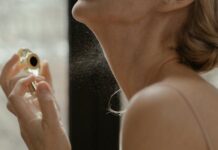
“Sit up straight”
I heard these words frequently as a kid. From a very young age, I always tended to slouch. I could never touch my toes while doing stretches as I felt pain. I didn’t realize how much of a problem it was until an appointment with my new primary care doctor. She immediately noticed the abnormal curvature in my spine and referred me to a specialist who diagnosed me with kyphosis.
You might be wondering what kyphosis is. According to the American Academy Of Orthopaedic Surgeons, “kyphosis is a spinal disorder in which an excessive curve of the spine results in an abnormal rounding of the upper back”
There are three different types of kyphosis: post-traumatic kyphosis, age-associated kyphosis, and Scheuermann’s kyphosis.
I was diagnosed with Scheuermann’s kyphosis. The University of Virginia School Of Medicine states that “Scheuermann’s kyphosis is a structural kyphosis that typically develops during adolescence, causing the kyphotic spine to become rigid and sometimes progresses into adulthood.”
As I was already going through puberty by the time I was diagnosed, I was rushed into physical therapy and told to wear a brace. These were ways to potentially correct my curvature before my body stopped changing. I always wondered how differently things would’ve been if my kyphosis was detected before I went through puberty.
For the entire year of 2011, I was constantly going to appointments for kyphosis. Many of them consisted of physical therapy, brace-fittings, X-rays, and consultations with an orthopedic surgeon. Waiting rooms started to become familiar to me as I’d grab the television remote, flipping through daytime television shows. I started to know the bus drivers by name as I’d frequently rely on public transportation.
Little did I know, this wouldn’t be the biggest struggle of my diagnosis.
There was always a possibility that I’d be faced with spinal fusion surgery. According to Hopkins Medicine, the surgery for kyphosis is a posterior spinal fusion with instrumentation. The surgery takes four to five hours, with a hospital stay of three to four days. The recovery is typically four to six weeks at home.
After the brace came off and my physical therapy was done, my curvature improved so much that surgery was off the table. I still have to continuously monitor my spine by doing X-rays, but I didn’t have to worry about the potential risks of having the surgery. However, I started to have severe body image issues due to my spine.
A few months after my last appointment, my parents enrolled me back into public school after a couple of years of homeschooling. I watched as kids started to call me names like “hunchback.” I constantly felt out of control of my own body because I couldn’t control the shape of my spine.
I remember constantly worrying about situations where my body would be more exposed, such as wearing a swimsuit or being intimate with someone.
After a few years, I started to take back control of my condition. I would practice the way I walked in my bedroom. I would choose clothes that hugged my body in the right way and made me feel confident. I started to feel more confident with my curves.
There are still situations where kyphosis does affect me. For example, I’ve had to watch how much I carry and put more consideration into certain ways I move my body as I don’t want to hurt myself. Due to this, I’ve had to consider kyphosis when looking into my activities and interests.
I may not be able to be an Olympic gymnast anytime soon, but I’m still able to live an average life despite having kyphosis. As long as I continue to follow up with my healthcare provider and get routine X-rays, I can live a long and healthy life.
For more information and awareness on Scheuermann’s kyphosis, visit the Scheuermann’s Disease fund website.
Photo by Emma Waleij on Unsplash


















